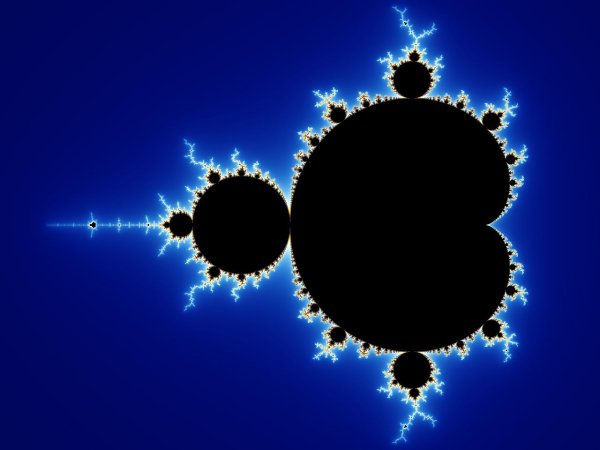
Christ told us that many would be called but few would be chosen. We have to wonder: How few? And why?
Christ also told us that the way is narrow and difficult, yet many so-called Christians contradict Christ, saying that salvation is an easy, comfortable location within which to “rest.” Why would they contradict Christ? Why would they lie?
“Enter ye in at the strait [narrow] gate: for wide is the gate, and broad is the way, that leadeth to destruction, and many there be which go in thereat: Because strait is the gate, and narrow is the way, which leadeth unto life, and few there be that find it” (Matthew 7:13–14).
Like the Pharisees of old, the modern version of Pharisees take the Bible, supposedly literally, yet miss its spirit. And even their literalism is heavily flawed, for they follow the “trinity” dogma even though the term and essence of this 4th century construct is literally nowhere to be found in the Bible.
Blasphemy and the Only Unforgivable Sin

Why is it that we can blaspheme against God and Christ, and be forgiven, but blaspheming against the Holy Spirit can never be forgiven? Is the Holy Ghost such an evil grouch that forgiveness is so alien to him?
“Wherefore I say unto you, All manner of sin and blasphemy shall be forgiven unto men: but the blasphemy against the Holy Ghost shall not be forgiven unto men. And whosoever speaketh a word against the Son of man, it shall be forgiven him: but whosoever speaketh against the Holy Ghost, it shall not be forgiven him, neither in this world, neither in the world to come” (Matthew 12:31-32).
The answer is nothing so bizarre. In fact, the reason blaspheming against the Holy Spirit is unforgivable is both startling and simple. And this simple truth destroys the idea of “trinity,” and with it the need for proclaiming Christ to be God—a relief to devout Jews everywhere.
Though the book, Trinity Treason, covers this topic in great detail, we will touch on the main points in this short article.
First, however, a little scriptural background so this truth is not misunderstood by those who truly hunger for salvation.
God Created Man Twice!

Is the image of God one of “dust?” Certainly, it isn’t. Yet, most Christians ignore this glaring fact, conflating the two natures of man without raising an alarm of logical inconsistency.
Most Christians aim their humility improperly toward the so-called experts, church leaders and toward the “ink” of scripture. Instead, they should aim their humility toward God and His Truth. And His Truth is a wisdom that can never be held y human words.
Many Christians cannot explain what they call the “mysteries” of Christianity, and remain comfortable in their ignorance. While their attitude has some merit in its form, it remains aimed in the wrong direction.
The so-called “mysteries” are a man made construct—a lie. If you want understanding, all you need to do is to ask God.
Christ said, Ask and you will receive. He did not say, Ask and sometimes you will receive. And those Christians who say that God sometimes says, “No,” are liars, for Christ never said or implied that there was any such qualification or condition.
The problem, then, is with the person doing the asking. How properly to ask is discussed in some detail in The Logical Christian and The Science of Miracles.
First, God created “man” in His own image:
“And God said, Let us make man in our image, after our likeness…” (Genesis 1:26).
And then, God created “man” from physical chemicals:
“And the Lord God formed man of the dust of the ground, and breathed into his nostrils the breath of life, and man became a living soul” (Genesis 2:7).
This dual nature of man is reinforced by another passage in Genesis:
“And the Lord said, My spirit shall not always strive with man, for that he also is flesh…” (Genesis 6:3).
Notice the wording. Notice the use of the word “also.” We know, quite literally, that man is flesh, but including the word “also” implies, rather potently, that he is something else, too. And we have already been told what that something “else” means—the “image” of God: spirit.
Yet, just as God is infinitely generous as a Divine Giver, man is a receiver and also inherently divine, for, as we are told, the son looks like the Father, and the Heavenly Father is most definitely not Homo sapiens.
Man Is Divine Spirit Wrapped in Mortal Flesh.

The entire Bible is a manual for spiritual redemption—one of man being rescued or reclaimed from this darkness we call “physical reality.”
On one end of the Bible we are told of the fall of man into this darkness:
“And the Lord God commanded the man, saying, Of every tree of the garden thou mayest freely eat: But of the tree of the knowledge of good and evil, thou shalt not eat of it: for in the day that thou eatest thereof thou shalt surely die” (Genesis 2:16–17).
and,
“Therefore the Lord God sent him forth from the garden of Eden, to till the ground from whence he was taken. So he drove out the man; and he placed at the east of the garden of Eden Cherubims, and a flaming sword which turned every way, to keep the way of the tree of life” (Genesis 3:23–24).
On the other end of the Bible, we are shown the cure for that spiritual death:
“Jesus answered, Verily, verily, I say unto thee, Except a man be born of water and of the Spirit, he cannot enter into the kingdom of God. That which is born of the flesh is flesh; and that which is born of the Spirit is spirit” (John 3:5–6).
God does not care for these mortal, temporary, animal bodies; He cares about His children who look like Him. Just as a human parent who learns of their daughter’s automobile accident, they do not rush to the automobile junk yard to mourn the loss of the vehicle; they rush to the hospital to pray for the speedy return of the daughter who looks like them.
Thus, when the first century Christians spoke of being filled with the Holy Spirit, they were referring to Christ’s solution to the spiritual death in the Garden—that of being reborn as spirit.
Though these things should seem obvious to a true Christian—an identity defined by Christ himself—most so-called Christians do not know these things. They covet physical things and easy salvation. They cling to lies and to the ink of scripture, rather than to its spirit.
Man is spirit wrapped in mortal flesh.
When man gives up ego and the importance of flesh, he is reborn as spirit, for he has found his way back to the narrow gateway—the infinitely thin passage at zero ego.
Traveling that way back to Heaven is not easy.
“Enter ye in at the strait [narrow] gate: for wide is the gate, and broad is the way, that leadeth to destruction, and many there be which go in thereat: Because strait is the gate, and narrow is the way, which leadeth unto life, and few there be that find it” (Matthew 7:13–14).
Blaspheming Against the Holy Ghost

Why is it that blaspheming against God and Christ can be forgiven, yet blaspheming against the Holy Spirit cannot? It isn’t because the Holy Ghost is incapable of giving forgiveness; it is simply and only because man cannot be reborn of the spirit if he remains certain that the spirit is “God,” and not in need of awakening (redemption or forgiveness).
Like the man who has an automobile in need of repair, his car cannot receive that repair if the owner denies that he even has a car. Thus, man who refuses to acknowledge his own spiritual nature cannot receive the perfect (100%) forgiveness which God so generously wants to give to him.
The Holy Spirit is the true spiritual self wrapped in flesh.
And because there is no trinity, the false reasons for claiming that our friend, Jesus, is God are easily destroyed.
- Jesus is our friend—not our God.
- Jesus was sent. God does not send God.
- Jesus is a servant of God. God is not a servant of Himself.
- Jesus is not omnipotent. He told those who wanted to be at his right hand in Heaven that these were out of his control.
- Jesus is not omniscient. He could be surprised by the faith of the centurion. And he could be similarly surprised by the incompetence of John the Baptist, the greatest of men born of a woman.
- Jesus said, “I and my father are one,” but this is not about identity, but rather harmony. He never said, “I am God.”
- Jesus said, “Before Abraham was, I am.” And no one in Heaven can ever speak of themselves in the past tense, because there is no time in Heaven. Yet, this does not automatically make all of the angels into God.
We can return to the Original Christianity, but that will take humility to God, rather than asking man for a description. The Bible can help, but we need to stop relying on the “ink” and refer to the spirit behind the written word.










































